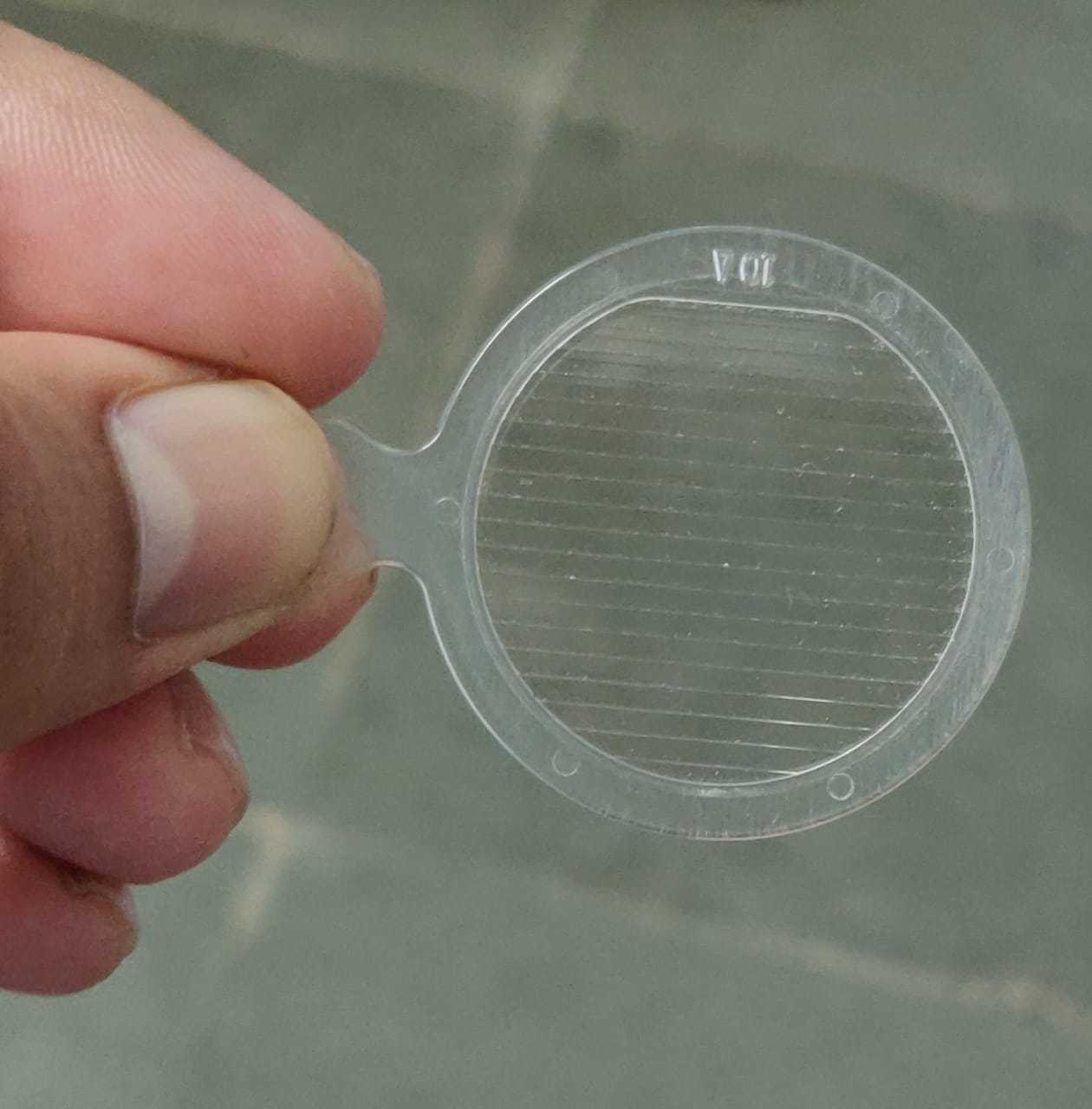[1]
Véronneau-Troutman S, Fresnel prism membrane in the treatment of strabismus. Canadian journal of ophthalmology. Journal canadien d
[PubMed PMID: 5125648]
[2]
Smith JL,Weiner IG,Lucero AJ, Hemianopic Fresnel prisms. Journal of clinical neuro-ophthalmology. 1982 Mar;
[PubMed PMID: 6226681]
[3]
Kedar S,Ghate D,Corbett JJ, Visual fields in neuro-ophthalmology. Indian journal of ophthalmology. 2011 Mar-Apr;
[PubMed PMID: 21350279]
[7]
Rossi PW,Kheyfets S,Reding MJ, Fresnel prisms improve visual perception in stroke patients with homonymous hemianopia or unilateral visual neglect. Neurology. 1990 Oct;
[PubMed PMID: 2215953]
[8]
Véronneau-Troutman S, Fresnel prisms and their effects on visual acuity and binocularity. Transactions of the American Ophthalmological Society. 1978;
[PubMed PMID: 754384]
[9]
Peli E,Jung JH, Multiplexing Prisms for Field Expansion. Optometry and vision science : official publication of the American Academy of Optometry. 2017 Aug;
[PubMed PMID: 28727615]
[10]
Peli E,Bowers AR,Keeney K,Jung JH, High-Power Prismatic Devices for Oblique Peripheral Prisms. Optometry and vision science : official publication of the American Academy of Optometry. 2016 May;
[PubMed PMID: 26866438]
[11]
Brunnett SM,Munson MT,Kirschen DG, Fresnel vs. conventional prisms: their effects on the apparent fronto-parallel plane horopter. American journal of optometry and physiological optics. 1988 Jul;
[PubMed PMID: 3207155]
[12]
Chen AM,Cotter SA, The Amblyopia Treatment Studies: Implications for Clinical Practice. Advances in ophthalmology and optometry. 2016 Aug;
[PubMed PMID: 28435934]
Level 3 (low-level) evidence
[13]
Teodorescu L. ANOMALOUS HEAD POSTURES IN STRABISMUS AND NYSTAGMUS DIAGNOSIS AND MANAGEMENT. Romanian journal of ophthalmology. 2015 Jul-Sep:59(3):137-40
[PubMed PMID: 26978880]
[14]
Tamhankar MA,Ying GS,Volpe NJ, Success of prisms in the management of diplopia due to fourth nerve palsy. Journal of neuro-ophthalmology : the official journal of the North American Neuro-Ophthalmology Society. 2011 Sep;
[PubMed PMID: 21378578]
[16]
Peli E, 2017 Charles F. Prentice Award Lecture: Peripheral Prisms for Visual Field Expansion: A Translational Journey. Optometry and vision science : official publication of the American Academy of Optometry. 2020 Oct;
[PubMed PMID: 33055514]
[17]
Irsch K, Optical Issues in Measuring Strabismus. Middle East African journal of ophthalmology. 2015 Jul-Sep;
[PubMed PMID: 26180462]
[18]
Gietzelt C,Fricke J,Neugebauer A,Hedergott A, Prism adaptation test before strabismus surgery in patients with decompensated esophoria and decompensated microesotropia. International ophthalmology. 2022 Jul;
[PubMed PMID: 35038124]
[19]
Oystreck DT,Lyons CJ, Comitant strabismus: Perspectives, present and future. Saudi journal of ophthalmology : official journal of the Saudi Ophthalmological Society. 2012 Jul;
[PubMed PMID: 23961004]
Level 3 (low-level) evidence
[20]
Hatt SR,Leske DA,Klaehn LD,Kramer AM,Iezzi R Jr,Holmes JM, Treatment for Central-Peripheral Rivalry-Type Diplopia ("Dragged-Fovea Diplopia Syndrome"). American journal of ophthalmology. 2019 Dec;
[PubMed PMID: 31323203]
[21]
Flanders M,Sarkis N, Fresnel membrane prisms: clinical experience. Canadian journal of ophthalmology. Journal canadien d
[PubMed PMID: 10604055]
[22]
Peli E,Vargas-Martin F,Kurukuti NM,Jung JH, Multi-periscopic prism device for field expansion. Biomedical optics express. 2020 Sep 1;
[PubMed PMID: 33014587]
[23]
Hoppe E,Perlin RR, The effectivity of Fresnel prisms for visual field enhancement. Journal of the American Optometric Association. 1993 Jan;
[PubMed PMID: 8454828]
[24]
Cheng C,Parreno J,Nowak RB,Biswas SK,Wang K,Hoshino M,Uesugi K,Yagi N,Moncaster JA,Lo WK,Pierscionek B,Fowler VM, Age-related changes in eye lens biomechanics, morphology, refractive index and transparency. Aging. 2019 Dec 16;
[PubMed PMID: 31844034]
[25]
Koh KM,Samuel Kim U, Fresnel prism on hess screen test. Case reports in ophthalmological medicine. 2013;
[PubMed PMID: 23710395]
Level 3 (low-level) evidence
[26]
Shen J,Peli E,Bowers AR, Peripheral prism glasses: effects of moving and stationary backgrounds. Optometry and vision science : official publication of the American Academy of Optometry. 2015 Apr;
[PubMed PMID: 25785533]
[27]
Sharma A,Tarbox L,Kurc T,Bona J,Smith K,Kathiravelu P,Bremer E,Saltz JH,Prior F, PRISM: A Platform for Imaging in Precision Medicine. JCO clinical cancer informatics. 2020 Jun;
[PubMed PMID: 32479186]
[28]
Taylor SC, Cosmetic problems in skin of color. Skin pharmacology and applied skin physiology. 1999 May-Jun;
[PubMed PMID: 10393522]
[29]
Anilkumar SE,Narendran K, Prisms in the treatment of diplopia with strabismus of various etiologies. Indian journal of ophthalmology. 2022 Feb;
[PubMed PMID: 35086246]
[31]
Jones K,Adaji A,Schattner P, Involvement of practice nurses and allied health professionals in the development and management of care planning processes for patients with chronic disease - A pilot study. Malaysian family physician : the official journal of the Academy of Family Physicians of Malaysia. 2014;
[PubMed PMID: 25606291]
Level 3 (low-level) evidence


